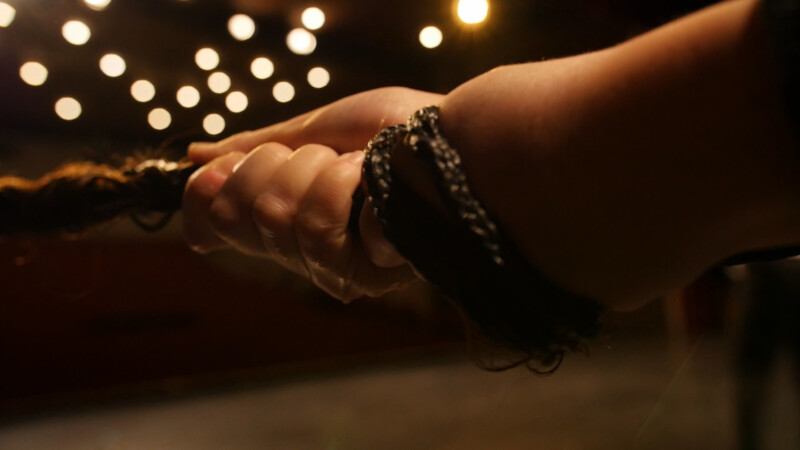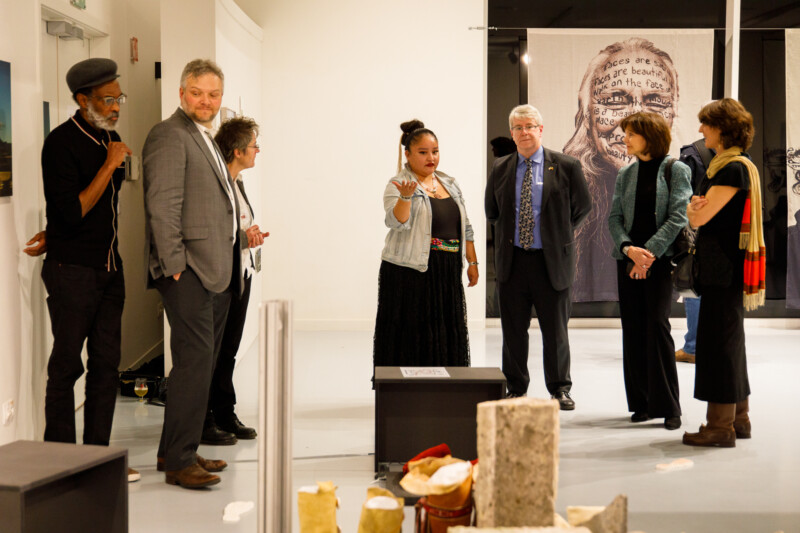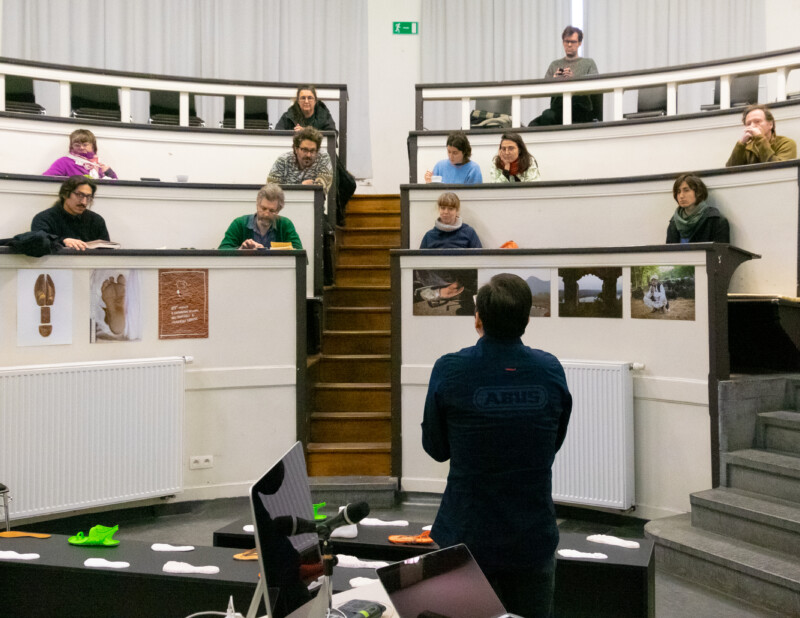The Body Plural
The lived body as a meeting place
The lived body is astoundingly multifaceted and therefore gives rise to a multiplicity of approaches to art and design. For this research cluster, the lived body and embodied experience are the meeting ground to gather expertise from different disciplines and backgrounds. The aim is to deepen, exchange and question perspectives on the lived body from different contexts and associated worldviews. It is one's specific practice that determines which dimension of the lived body and of embodied experience is important.
Non-neutral bodies and dualities
Bodies always already are politically, socially and ideologically situated and are never versions of previously neutral bodies. A lived body is never a neutral given, but is an expression of a worldview by which it is also shaped. Specific attention is paid to dominant dualistic conceptions of the body and the normative frameworks around it. These conceptions approach lived experience and embodiment from only two values, which often exclude or are opposed to each other. Examples of such dualities include natural/artificial, nature/culture, human/posthuman or non-human, human/nature, subject/object, human/animal, self/other, strange/familiar, healthy/diseased, biological/constructed, individual/collective, real/symbolic, active/passive, physical/mental, emotional/rational, sensory/mental, skill/contemplation ... and other shifting categories.
Art and design practices are a privileged place to address and possibly transcend these dualities and their normative frameworks. This research cluster prioritizes pluriverse worldviews and explores the transformative potential of embodied experiences. The cluster thus contributes unique insights that can update our understanding of inclusivity, nature, diversity, innovation and bodies.
Methodologies
Given the diversity of practices engaging with the various dimensions of the lived body, a multitude of methodologies is needed. Artistic and scientific forms of knowledge production are merged with other areas of research. Each research project faces the challenge of applying or developing its own methodology. However, the collective endeavour is critical and self-critical, whether it is undertaken from an ecological, phenomenological, design-anthropological, crip-theoretical, decolonial, queer, feminist, co-creative or any other perspective or method. What these perspectives and methods have in common is a critical approach to the lived body and the prevailing normative frameworks around it.
The themes and scope of this research cluster weave into four lines of research. Each line of research is open to all art and design practices.
The body as site of identity: shaping lived bodies and spaces
The focus of this research line is the lived body as a site of identity and social encryptions and the many dualities involved. These dualities interact intimately with the physical, social, digital and other spaces that bodies inhabit and by which they are mediated. The mutual shaping of lived bodies and spaces invites the exploration of non-verbal, spatial and social contexts of embodied experience, individually and collectively. Of particular interest is the original non-neutrality and co-constitution of lived bodies and lived spaces in art and design practices.
Human and other bodies: the tension between human and non-human or posthuman bodies
This research line explores what human and other bodies are and pays attention to the tension between bodies traditionally perceived as human versus non-human or posthuman bodies. It also explores the malleability of this tension and the implications for the larger ecosystems shared by these actors. Non- and posthuman entities become the subject of ethical, aesthetic and political reflections and practices, raising questions about ecology, race, gender, ethics and sociopolitics in the 21st century. At the same time, they necessitate a reconsideration of what it means to be human and what constitutes human, non-human and inhuman bodies.
Embodied making: Knowledge through tactile engagement
This research line focuses on the tactile and non-verbal aspects of making processes and on alternative ways of producing knowledge that do not rely exclusively on words. This enables a shift towards more experiential and often collaborative approaches to knowledge and a transcendence of dualistic thinking. It highlights the formative power of creative processes, not only for art and design practices, but also for developing more sustainable perspectives within society that transcend dualistic conceptualizations of social, ecological and other problems.
Documenting and challenging normative representations of the body
Images, representations and documents of the body are central to this research line. Their emancipatory potential is explored in relation to feelings and sensitivities with respect to body images. This approach examines the non-neutral body as represented but also as representing, breaking through normative frameworks of representation. This research line is not limited to the visual/audiovisual arts, but extends to representations in every modality, from visual to acoustic, from performative to conceptual.








